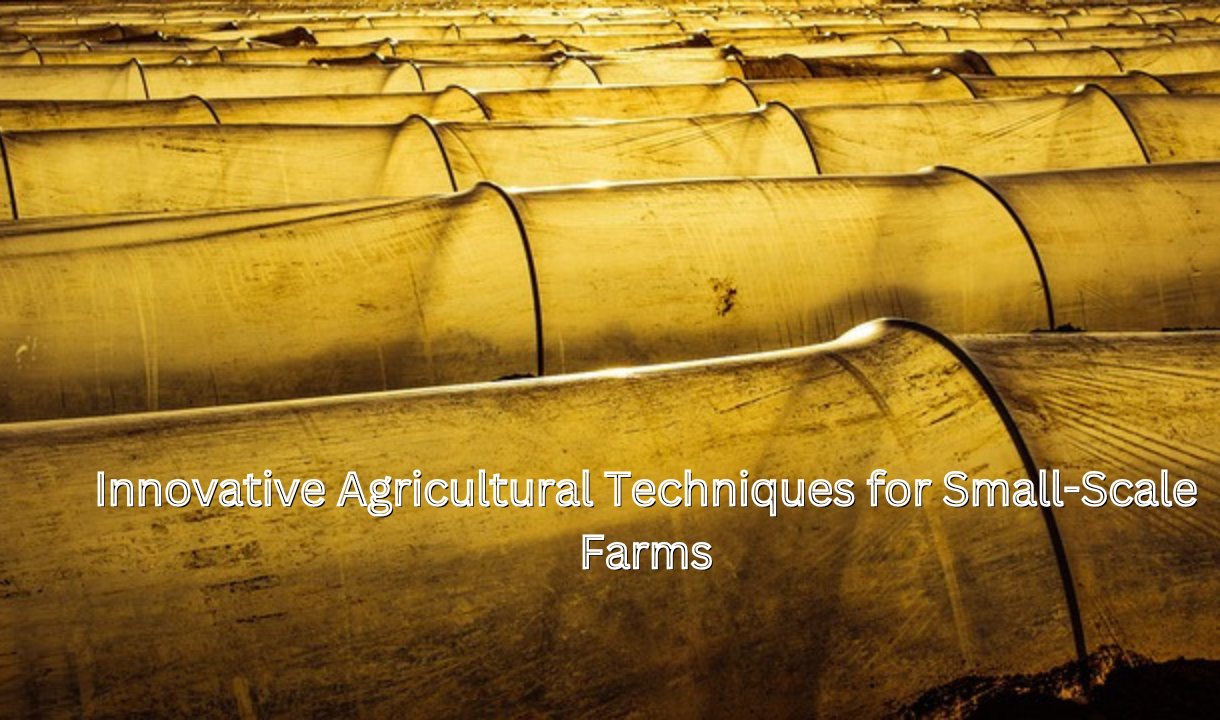Innovative Agricultural Techniques for Small-Scale Farms USA
In the evolving landscape of agriculture, small-scale farmers in the USA are increasingly turning to innovative agricultural techniques to enhance productivity, optimize resource use, and ensure sustainable practices. As land availability decreases and environmental challenges intensify, embracing advanced methods is crucial for maximizing yields while preserving the land for future generations.
1. Vertical Farming: Maximizing Space Efficiency
One of the most groundbreaking approaches for small-scale farms is vertical farming. This method involves growing crops in stacked layers, often indoors or in controlled environments. Vertical farming utilizes hydroponics, aeroponics, or aquaponics systems, which allow for reduced water usage by up to 90% compared to traditional farming.
By using LED lighting and climate control systems, farmers can grow crops year-round, increasing harvest frequency and overall productivity. Vertical farming is particularly beneficial for urban farmers with limited land, enabling the production of fresh produce in smaller spaces.
Benefits of Vertical Farming:
| Benefit | Description |
|---|---|
| Space Efficiency | Uses less land, ideal for urban environments |
| Water Conservation | Requires significantly less water |
| Reduced Pesticides | Controlled environments minimize pests |
| Year-Round Production | Enables continuous crop growth |
2. Hydroponics and Aquaponics: Soil-Free Farming Solutions
Hydroponics is a method of growing plants without soil by using nutrient-rich water. This approach not only conserves water but also accelerates plant growth. Aquaponics takes hydroponics a step further by integrating fish farming with plant cultivation. Fish waste provides natural nutrients for the plants, while the plants filter and purify the water for the fish.
Small-scale farmers benefit from aquaponics by producing both vegetables and fish, creating a dual income stream. This closed-loop system is highly sustainable and efficient, reducing dependence on chemical fertilizers and minimizing environmental impact.
Key Differences Between Hydroponics and Aquaponics:
| Feature | Hydroponics | Aquaponics |
| Nutrient Source | Chemical solutions | Fish waste |
| Initial Cost | Lower | Higher |
| Sustainability | Moderate | High |
| Product Yield | Plants only | Plants and fish |
3. Regenerative Agriculture: Restoring Soil Health
Regenerative agriculture focuses on restoring and enhancing soil health through practices like cover cropping, crop rotation, reduced tillage, and composting. By enriching the soil with organic matter, farmers improve water retention, reduce erosion, and boost crop yields.
Cover crops, such as clover and rye, prevent soil degradation during off-seasons, while crop rotation disrupts pest cycles and replenishes essential nutrients. These techniques not only increase farm resilience but also contribute to carbon sequestration, combating climate change.
Techniques of Regenerative Agriculture:
- Cover Cropping: Planting crops that cover soil to prevent erosion.
- Crop Rotation: Rotating different crops to enhance soil nutrients.
- Composting: Using organic waste to enrich soil quality.
- Reduced Tillage: Minimizing plowing to preserve soil structure.
4. Permaculture Design: Harmonizing with Nature
Permaculture is a holistic approach to agriculture that integrates land, resources, people, and the environment through sustainable design. For small-scale farms, permaculture emphasizes biodiversity, natural pest control, and efficient use of energy and water.
Implementing permaculture principles involves creating polycultures (planting multiple crops together), building swales for water conservation, and using natural mulches to retain soil moisture. This design minimizes external inputs and fosters self-sustaining ecosystems.
Key Components of Permaculture:
| Component | Description |
| Polycultures | Planting diverse crops together |
| Swales | Channels to collect water |
| Mulching | Retains soil moisture and suppresses weeds |
5. Precision Agriculture: Data-Driven Farming
Precision agriculture leverages technology to monitor and manage crops with high accuracy. By utilizing drones, GPS mapping, and IoT sensors, farmers gather data on soil health, moisture levels, and crop conditions. This information allows for precise application of water, fertilizers, and pesticides, minimizing waste and maximizing efficiency.
Small-scale farmers can adopt affordable precision agriculture tools, such as soil sensors and smartphone apps, to enhance decision-making and improve productivity. This technology-driven approach leads to higher yields and lower operational costs.
Common Precision Agriculture Tools:
| Tool | Function |
| Drones | Aerial crop monitoring |
| Soil Sensors | Measure soil moisture and health |
| GPS Mapping | Precision field management |
| IoT Devices | Real-time farm data analysis |
6. Agroforestry: Integrating Trees with Crops
Agroforestry involves the integration of trees and shrubs with crops and livestock. This method enhances biodiversity, improves soil health, and provides additional income streams from fruit, nuts, or timber. Trees act as windbreaks, reduce soil erosion, and contribute to carbon storage.
Small-scale farmers can implement alley cropping, where rows of trees are planted alongside crops, or silvopasture, which combines tree planting with livestock grazing. Agroforestry fosters a more resilient and diverse farm ecosystem.
Agroforestry Methods:
- Alley Cropping: Planting rows of trees between crops.
- Silvopasture: Integrating livestock with tree planting.
- Forest Farming: Cultivating crops within forest environments.
7. No-Till Farming: Reducing Soil Disturbance
No-till farming is gaining popularity among small-scale farmers as a way to protect soil structure and prevent erosion. This technique involves planting crops directly into the residue of previous harvests without plowing. By minimizing soil disturbance, organic matter is preserved, leading to better water retention and healthier soil.
No-till farming also reduces fuel and labor costs, making it an economical and sustainable option for small-scale farmers seeking to enhance soil fertility.
Benefits of No-Till Farming:
- Preserves soil structure.
- Reduces labor and fuel costs.
- Improves water infiltration.
- Minimizes erosion.
Conclusion(Innovative Agricultural Techniques for Small-Scale Farms)
The future of small-scale farming in the USA lies in the adoption of innovative agricultural techniques that enhance productivity, sustainability, and profitability. By embracing methods such as vertical farming, regenerative agriculture, and precision technology, small-scale farmers can thrive in a competitive landscape while contributing to food security and environmental conservation.
